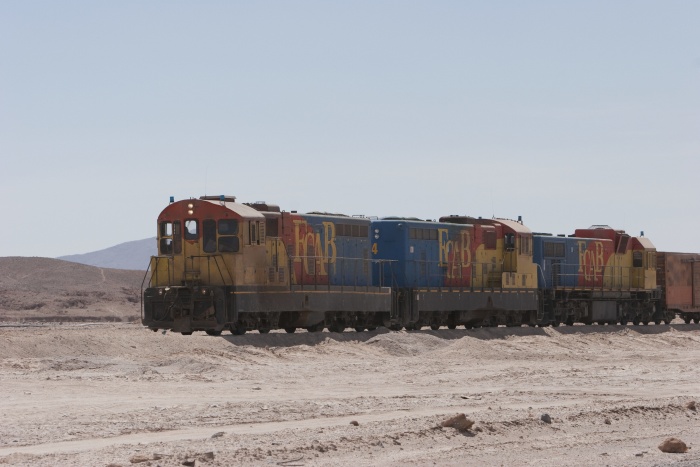
Chile unveils US$5 billion rail development plan
The Chilean government has unveiled plans to invest over $5 billion in one of the largest railway development plans in its history.
The plans have the aim of tripling passenger numbers in the country, while also boosting rail freight.
President Sebastián Piñera said the ‘Chile on Rails’ programme would include 25 projects to modernise and expand the network.
The aim is to add 1,000 kilometres of track.
It is hoped some 150 million passengers will travel each year by 2027, while the freight network is also expected to carry 21 million tonnes of goods annually.
Launching the programme in the city of Melipilla, Piñera said trains would be “part of the daily life of Chileans”.
“We are making a great effort for the railways to not only improve the quality of life of our fellow countrymen, but also make a great contribution to the development of our country,” he added.
Among the projects mooted are a 61-kilometre connection between Alameda and Melipilla, which will transport around 50 million passengers a year.
A link between Santiago, San Antonio and Valparaíso, which Piñera said would be open the subject of an international tender, is also on the cards.
A rail link to Arturo Merino Benitez Airport, which deals with 30 million passengers a year, could also be built.
ADVERTISEMENT
GlobalData’s railway technology writer Adele Berti said: Set to start in 2020, the mammoth $5 billion programme will carry out 27 infrastructure and security projects in order to boost passenger and cargo services throughout the country.
“Of the $5 billion set aside for it, about 44 per cent will be used for projects in the capital, with the remaining 56 per cent being split among regional works, covering a total of 1,000 kilometres of rail lines and doubling cargo volumes to over 21 million a year.
“Despite faring better than many of its South American neighbours, Chile’s almost 7,500-kilometre-long rail network has been in steady decline over the past few years.”
Work is expected to be complete in 2027.
Dariana Tani, an economist at GlobalData who specialises in infrastructure projects in the Americas, added: “Chile’s railway system remains underdeveloped.
“Much of the serving infrastructure is deemed inadequate.
“As the economy is weakening and the country is losing ground in terms of competitiveness and overall quality of infrastructure against its major trading peers, it is reasonable to say that the government is trying to reverse this trend by investing more in critical infrastructure such as railways, roads, airports, energy, water and telecommunications.
“Given how underdeveloped Chile’s railway network is at present and how poor is the efficiency of its train services, the recently launched rail programme can be seen as important steps the government is taking to address the country’s infrastructure bottlenecks and raise its global competitiveness.”
Peter Langer/Zuma Press/PA Images

